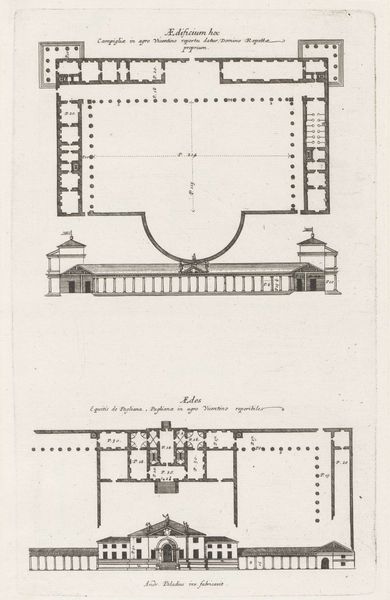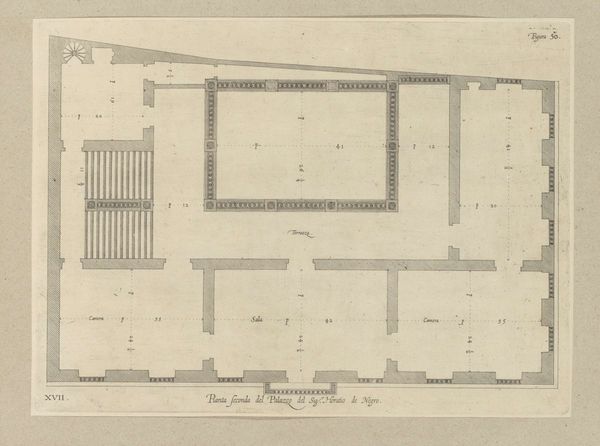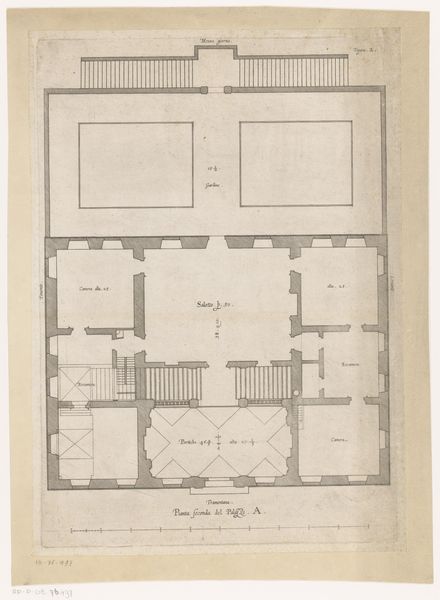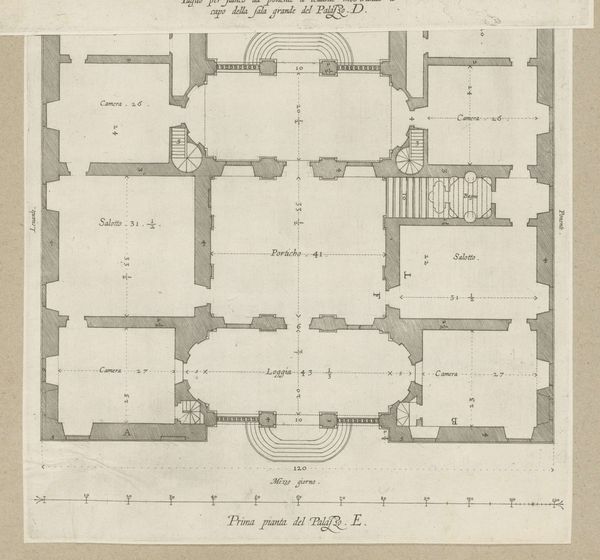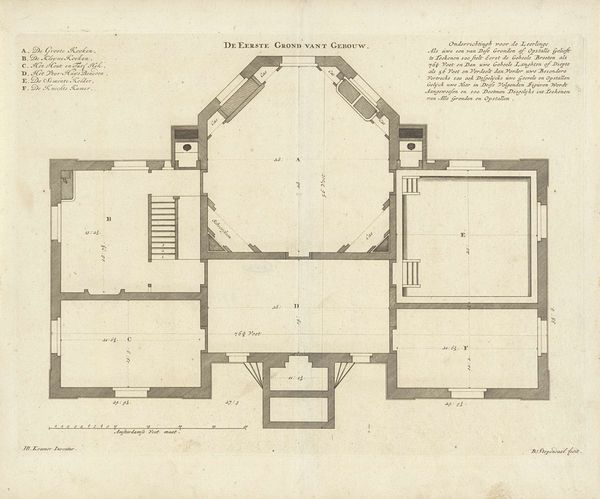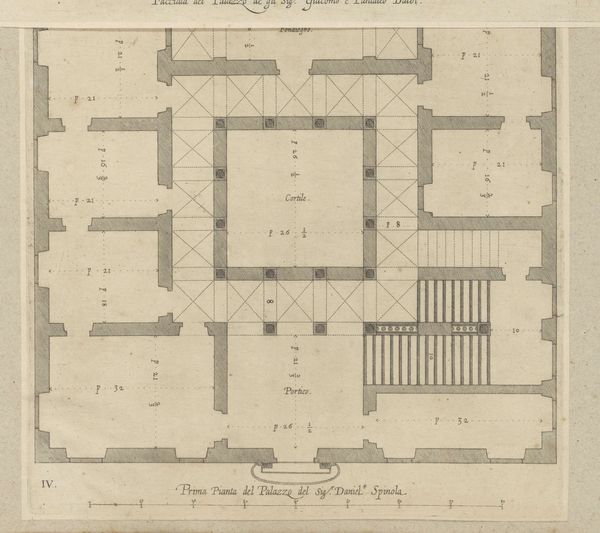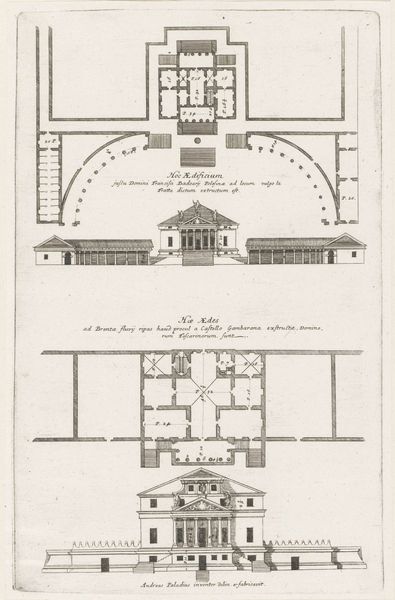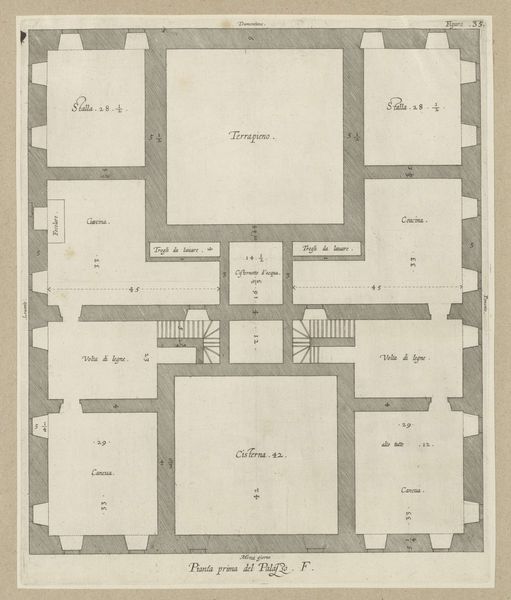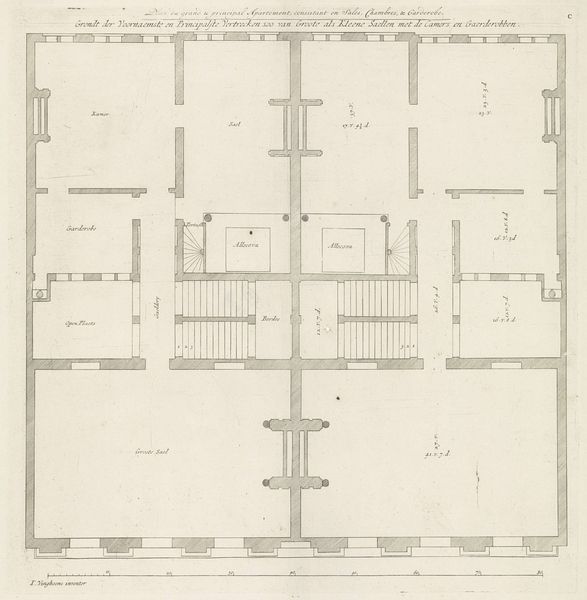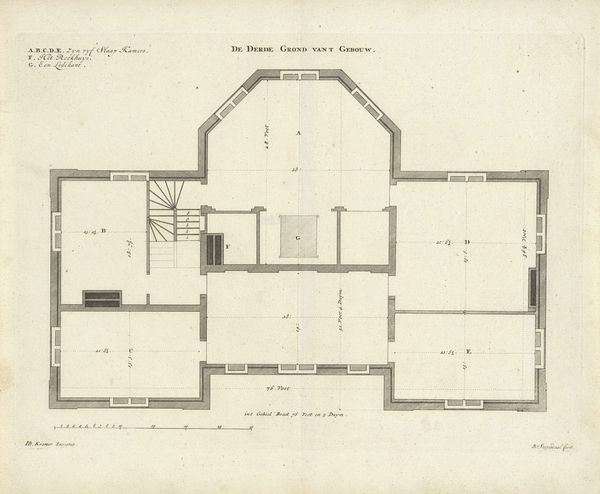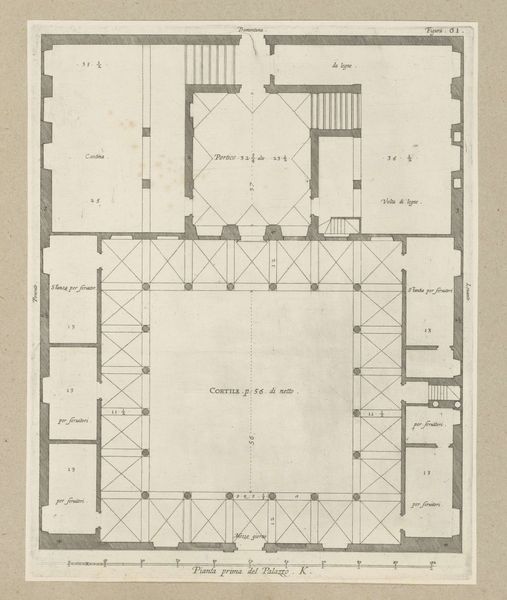
Dwarsdoorsnede van de koepel van de Santa Maria del Fiore te Florence 1733 - 1755
0:00
0:00
bernardosansonesgrilli
Rijksmuseum
drawing, print, paper, engraving, architecture
#
architectural sketch
#
drawing
# print
#
architectural plan
#
paper
#
11_renaissance
#
geometric
#
elevation plan
#
architectural section drawing
#
architectural drawing
#
italian-renaissance
#
engraving
#
architecture
Dimensions: height 528 mm, width 363 mm
Copyright: Rijks Museum: Open Domain
Editor: Here we have Bernardo Sansone Sgrilli’s "Cross-section of the Dome of Santa Maria del Fiore in Florence," a print from the mid-18th century. It’s intricate, almost like a technical blueprint, and I’m struck by the sheer amount of labor and knowledge that went into creating both the dome itself and this rendering of it. What's your interpretation of this drawing? Curator: This isn’t just a pretty picture, is it? Look at the details of the rendering and the clear focus on the structural elements – the materials, the joining techniques, the very bones of the dome. It directs our attention away from a simple aesthetic appreciation, and invites us to consider how it was fabricated. What impact did these material and construction choices have on the space below? Editor: That's a great point. It’s easy to forget that the dome was essentially a feat of engineering as much as an artistic marvel. All of that labour just to create what’s in this picture. Curator: Exactly. Think about the guilds involved, the timber supply, the social organization of labor. A piece like this allows us to question that hierarchy of "high" art versus the "lower" crafts necessary for its realization. This section drawing showcases the knowledge needed, which democratizes art in a sense. Do you agree? Editor: I see what you mean. It flips the script, highlighting the collective effort instead of just the artist's genius. It's almost like a record of intellectual property contributed by many to this drawing. Curator: Yes, by emphasizing the process and the conditions of its creation, we move away from individual genius and into the collaborative networks, which is important for analyzing historical context. Editor: Thanks, I hadn't really considered the social context so deeply, it provides a much richer view. Curator: And seeing the means of production here offers a different perspective altogether.
Comments
No comments
Be the first to comment and join the conversation on the ultimate creative platform.
